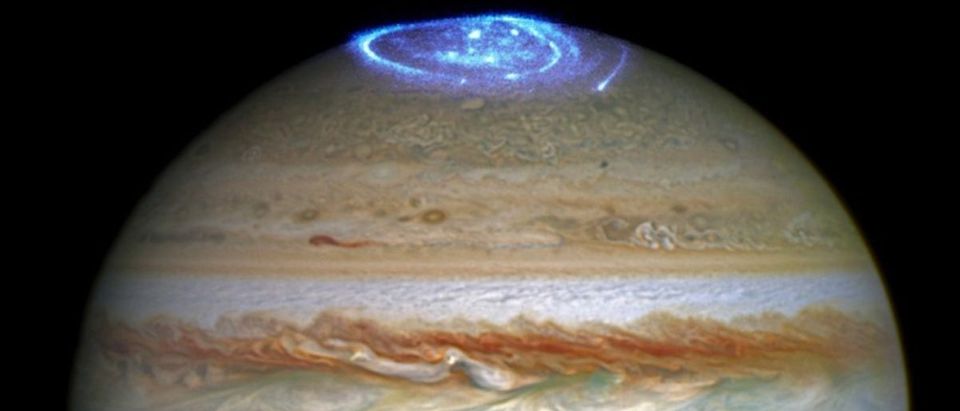Jupiter’s icy, ocean-filled moon glows in the dark, researchers and scientist with the National Aeronautics and Space Administration shared.
“As Europa orbits Jupiter, it withstands relentless pummeling of radiation,” a tweet from NASA read Monday, along with its findings and a picture of a glowing moon in the dark. (RELATED: EXCLUSIVE: ‘A New Era Of Human Exploration’ Begins As NASA, SpaceX Prepare For Historic Launch)
“But as the particles pound the icy ocean-filled moon’s surface night after night, day after day, they may also be doing something otherworldly: making Europa glow in the dark,” the post added.
Check it out!
As Europa orbits Jupiter, it withstands relentless pummeling of radiation. But as the particles pound the icy ocean-filled moon’s surface night after night, day after day, they may also be doing something otherworldly: making Europa glow in the dark: https://t.co/LgaUpdVCt3 pic.twitter.com/t7uq4SBtmh
— NASA (@NASA) November 10, 2020
A report in the journal of Nature Astronomy detailed how this unique discovery could lead scientist to find out if the planet could sustain some type of life, per NBC News.
According to the report:
The researchers built a below-freezing “ice chamber” at NASA’s Jet Propulsion Laboratory in Pasadena, California, to contain the chemicals thought to be on Europa’s icy surface and exposed it to a beam of high-energy electrons to simulate the radiation from Jupiter.
“We saw that whenever we shot it with the electron beam, it glowed,” Murthy Gudipati, an astrophysicist with NASA shared. (RELATED: FACT CHECK: Do 89% Of Americans Under 45 Believe The 1969 Moon Landing Never Happened?)
The lead author of the study added that, “when the electrons were switched off, the glow went off.”
“We realized that this ice glow can be controlled by what kind of material is there,” Gudipati explained.
A release from NASA, detailed how “different salty compounds react differently to the radiation and emit their own unique glimmer” and that to the naked eye it would look “slightly green, sometimes slightly blue or white.”
“We were able to predict that this nightside ice glow could provide additional information on Europa’s surface composition,” Murthy shared. “How that composition varies could give us clues about whether Europa harbors conditions suitable for life.”
The piece noted, the upcoming mission, set to launch in the mid 2020’s, will observe Europa’s surface in multiple flybys while orbiting Jupiter.
Scientist are reviewing the new findings to “evaluate if a glow would be detectable by Europa Clipper’s science instruments” to help identify the “salty components” on the moon‘s surface or narrow down what it could be.


